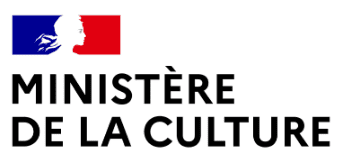For Night Work, you filmed the life of a Paraguayan community in Cuenca over 7 years. What were your first intentions and how did they evolve during the process?
This whole process has been a bit like learning by doing. These young people come from Paraguay to work very hard and there was a desire among us to generate a personal archive that would record the small community that had been formed; their experiences, the relationship that had been generated between their friends, fellow countrymen, us and the city.
In 2011, we needed a narrator to finish a project. By chance we met Mercedes, a young Paraguayan woman. We were captivated by her voice and the way she expressed herself. So, she helped us with the narration and that’s how it all started. Interesting things came out of this encounter, she spoke in Guarani and told us about her experiences. Little by little we got to know the rest of the Paraguayans living in Cuenca. We made small videos, filming collective events such as baptisms, birthdays, weddings, baby showers and parties. After some time of getting to know each other, personal meetings began. There was a lot of work without a camera and without pretensions of making a film. It was more about being, sharing, listening and talking. It was in this process that the themes, concerns and desires were defined. Also, there were recurring themes that kept coming back. We felt that something was happening and that it was necessary to continue filming, but it was much later that we began to question whether a film could exist with all these records and whether it was necessary.
Some fragments rely on staging and on an active participation of the people.
Can you tell us about your filmic process, its participative dimension?
We try to make the filming process horizontal and democratic. The testimonies, dialogues, words that are said in the film, are just as they have wanted to express them, there has not been a process of rehearsal or text refinement. We do not write, we do not decide the place, nor the clothes, nor the text, we try to be attentive to the tensions and impulses that arise in the very encounter. What looks like staging is really the outcome of a common agreement, an intersection between their desires, concerns, confessions, the city and us.
“That week we had talked about very personal topics about her childhood and about her current situation, which was unstable. Belén did not want to record anything those days, just talk, so we suggested her to enter the Museum and take a tour in a place she did not know yet. It was a relaxed walk surrounded by beautiful images. After some time, we returned to the Museum and recorded. We just asked her mother’s name and she answered.
This story completed itself years later when we remembered that recording and she told us that her mother left her in Paraguay when she was 5 years old and came to Spain. When she confessed, she was already the mother of a son.
That memory that returned, found its place in the film.”
Our most active, capricious and visible work emerges in the editing process. Where for example an external text written by us or by others invades and interferes, highlighting certain underlying meanings in the film. These passages are subtitled to be read, without voice-over.
You must have accumulated a lot of footage over the years. Can you tell us about the editing process?
While filming and editing we have liked to keep the meanings as open as possible, to try not to impose ourselves on the material and to let things find their place. By looking closely and analyzing the material we were able to find connections. During the editing process, we think our artistic background has helped us understand the passages and to connect them in ways in which spatial continuity and temporal linearity have taken a secondary place. Accustomed to working with still images we started to think in clusters of meanings that serve as keys to connect sequences. On a stylistic level we have tried to make the combinations of sound and image surprise us, to avoid falling into already known formulas. Some narrations are desynchronized and one of the reasons is because there is a lot of material that is just sound recordings without images. Once selected for their content we had to find the best way to recombine them with images so that they could be re-signified. We really like poetry and its form of enjambment, that is to say, the dosing of the information that is presented. In this way we discover little by little all the layers that make up the film. There are three stylistic times that are constantly intertwined in the film. A chronic time, a film essay time and a fictional time.
The film begins with a very powerful prologue using the photographs of Yokei Yoshiyuki showing lovers in a park at night. Why this choice for the opening?
Night Work begins with scenes of people in the park at night. These images and the following ones show and suggest the central theme of the movie: the forms of the community.
Kohei’s photos have something melancholic, of lonely people seeking affection and show an ephemeral nocturnal community. This community needs to come together to take care of itself, to protect itself and to love each other and it helps us to think about the fragility of our Paraguayan community. The night symbolizes a space-time where everything happens. Where everything is possible where you dream, where bodies rest. The night to dance as liberation, as leisure, as enjoyment, and the night to work, where one plans what to do in the future, in the return, in short, the night work.
Painting plays an important role in the film. Mainly religious painting (or sculpture) about episodes from the Passion of Christ. As the function of these paintings is far from being illustrative, the role played by religion in your film goes far beyond a documentary approach of the religiosity of the people. Can you comment on that?
Religion is important in this community, as it is in our city, Cuenca. Christianity knew how to represent suffering in an extraordinary and even brilliant way. This operates in an empathic and healing way.
Painting appears as a symbolic space and functions as a mirror of some feelings that appear in the film. Painting makes visible the ineffable.
We understand religion as “state of hope”. Faith is that, always keep believing in someone, IN THE OTHER.
That is the meaning of the religious concept in this film.
St. John was going towards his GOD
AND
we
are going towards them.
Interviewed by Cyril Neyrat







